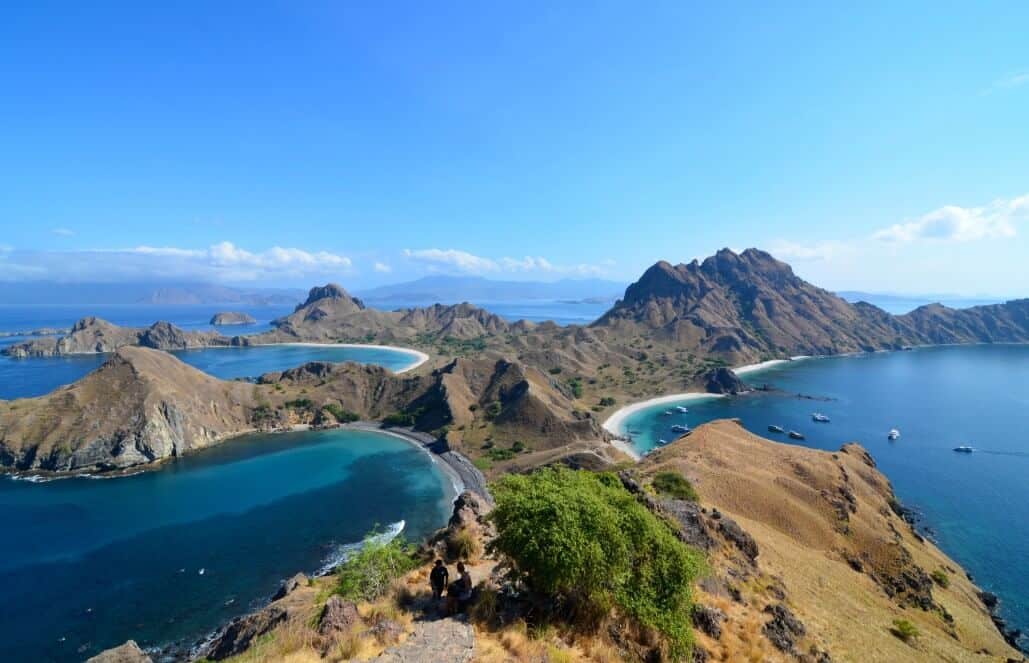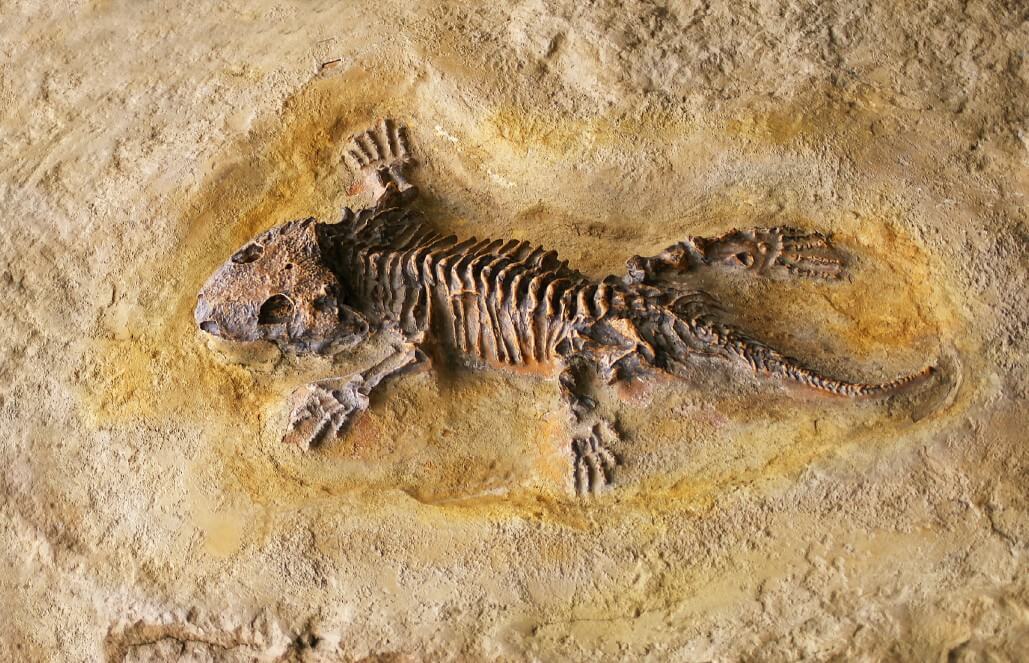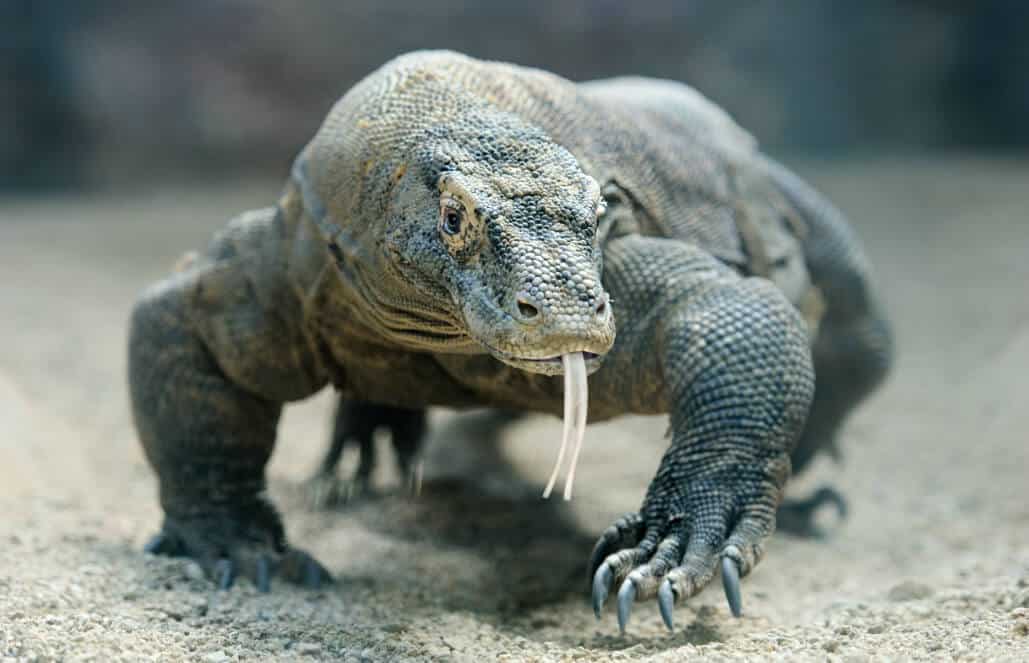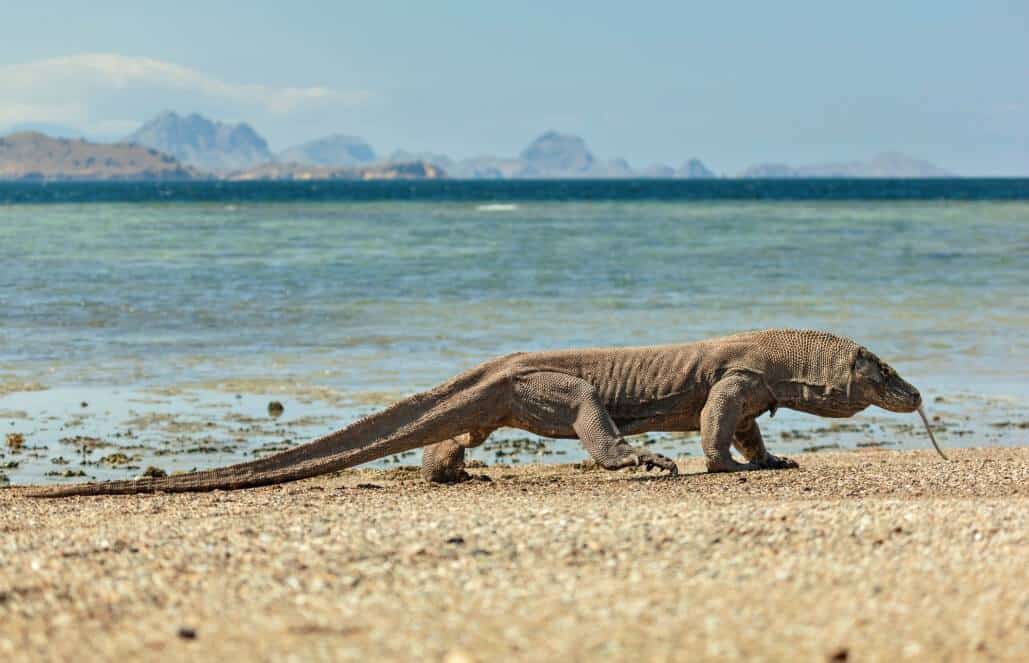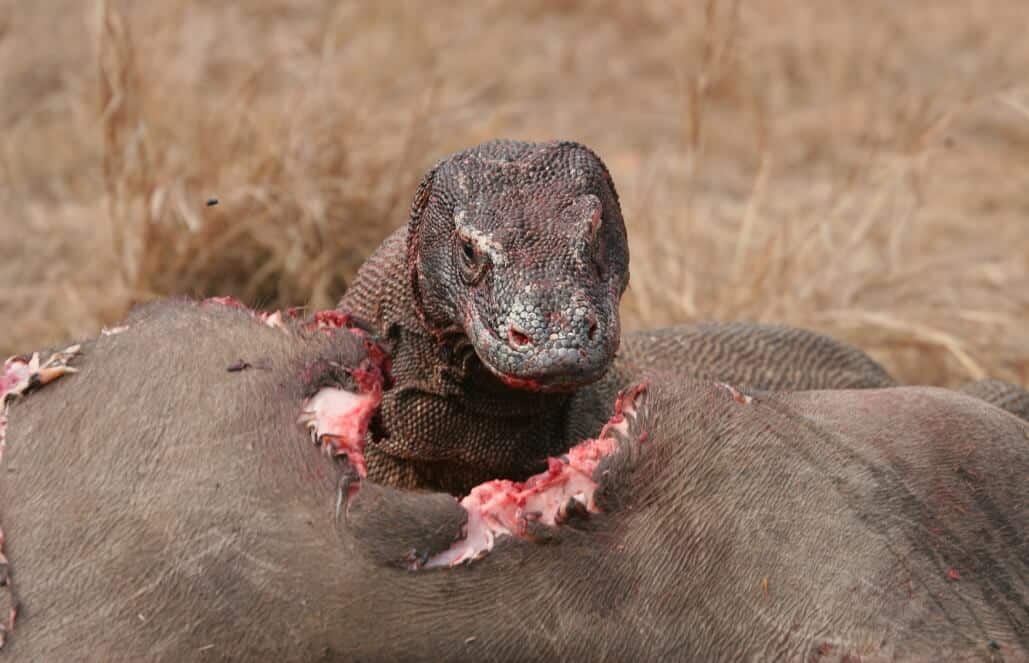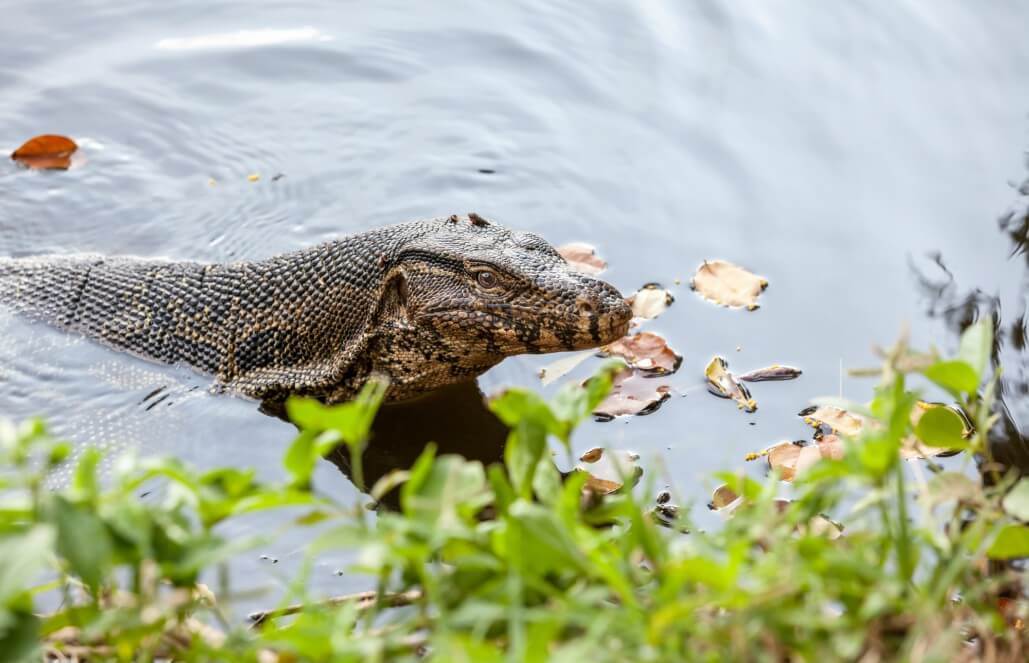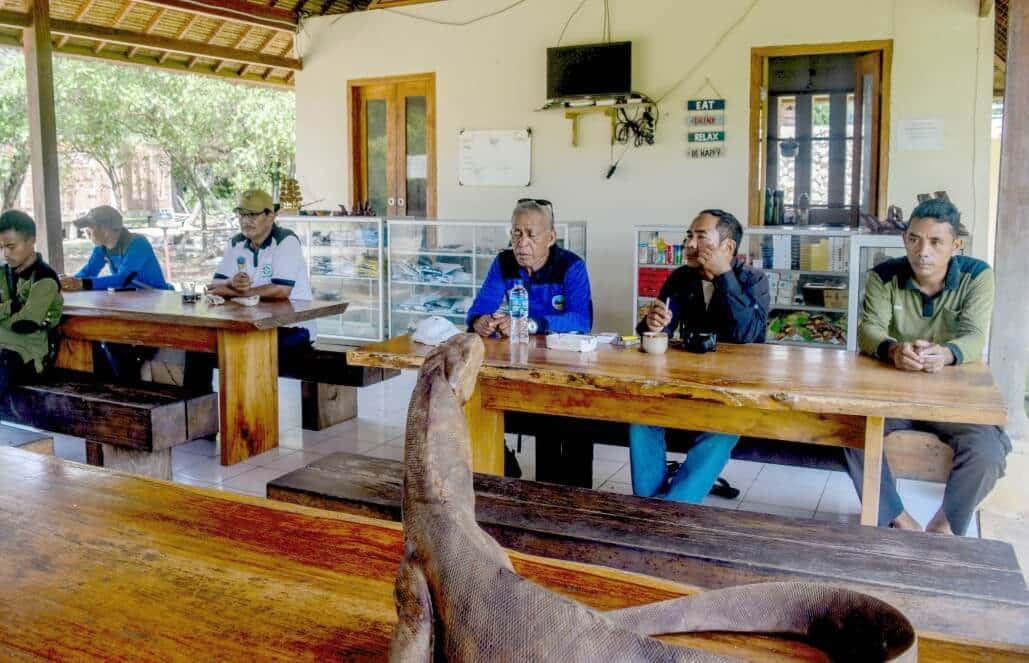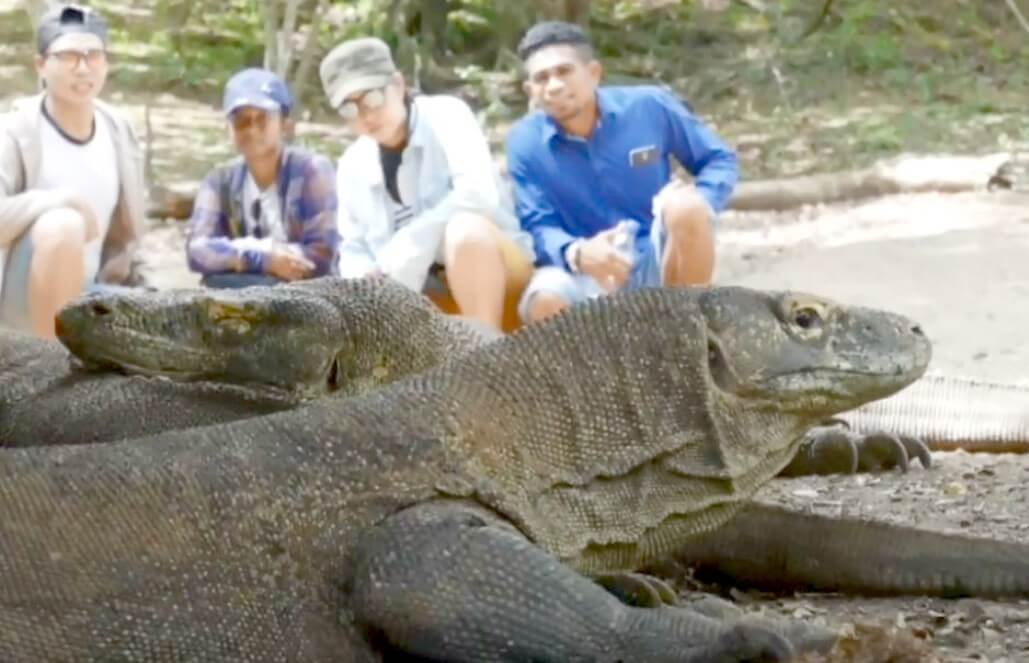Komodo dragons are a mysterious, fascinating wildlife species. Their name itself draws a large amount of attention, but there is much more to these animals than just the name.
Check out these 10 amazing facts about komodo dragons:
1) Komodo dragons are not dragons
Komodo dragons are in fact, lizards, and they are by far the largest lizards on Earth. These lizards can grow up to ten feet long (three meters), approximately the length of a small car. They’re heavy, too – they can weigh up to 154 pounds on average, but have been weighed up to 135 kilograms, which is approximately the same weight as a panda bear!
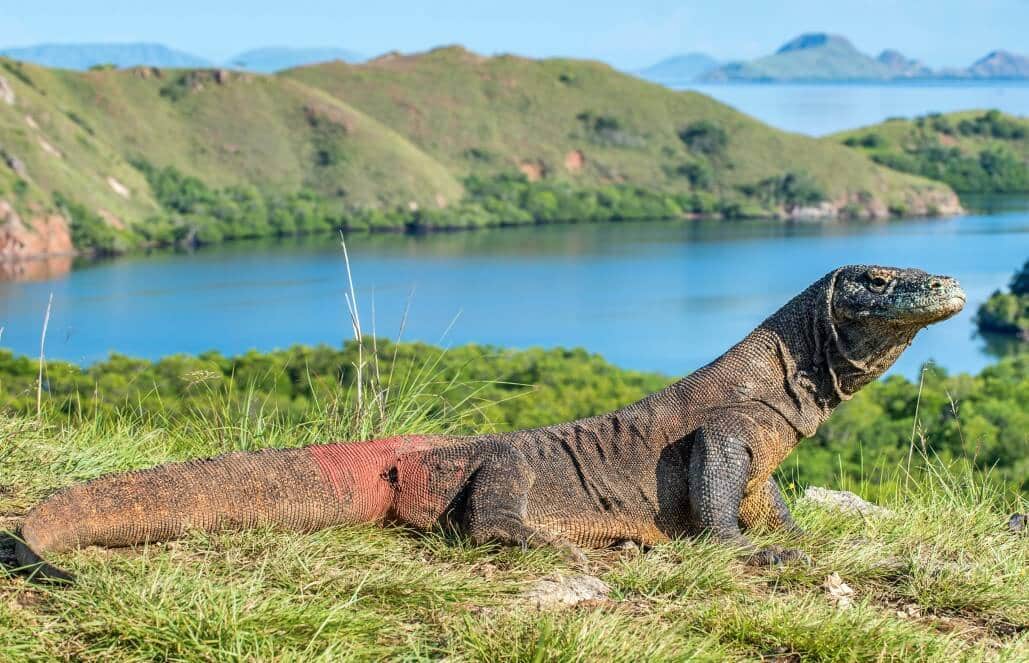
2) Komodo dragons are venomous
Komodo dragons are known for their notorious, venomous hunting strikes. It used to be believed that these lizards had various strains of bacteria in their saliva that killed prey, but this theory was discredited by the University of Queensland and it is now believed that they secrete venom proteins similar to that of venomous snakes.
3) They live on their own island!
Komodo dragons are only present on five Indonesian islands, and in no other country in the world. Four of these islands make up what is known as Komodo National Park, and the fifth island is that of Flores. The main island that is home to the largest amount of komodo dragons in the world is named after these lizards; it is so-named Komodo Island.
4) Komodo dragons may have originated in Australia
According to various research publications, including that of the prestigious Smithsonian magazine, there is new fossil evidence that suggests the komodo dragon originated in Australia! Numerous fossils were unearthed by a team of international scientists in eastern Australia, dating back from 300,000 years ago to roughly 4 million years ago, that are identical to current-day komodo dragons.
5) They have an excellent sense of smell
As with most reptiles, the komodo dragons use their forked tongues instead of noses to smell. They can detect a rotting prey from 2.5 miles (4 kilometers) away. Their sense of hearing and sight, however, are less than impressive.
6) Their tails are as long as their bodies
Komodo dragons can reach the length of a small car, and their tail plays a large role in this length. Not only is their tail as long as the rest of their body, but their tails are strong enough to take down a deer! Komodo dragons will swing their tail back and forth as a scare tactic, but will also do this when they are scared themselves.
7) Komodo dragons are carnivores
These giant lizards are ruthless carnivores! Being such aggressive meat-eaters; they will eat any meat, from large deer to even humans and water buffalo. They certainly have the strength and venom to do so. An interesting fact is that sometimes they eat each other – the larger of the lizards of course will eat the younger and smaller. In addition to eating any meat they can get their tail on, these giant lizards can eat nearly their entire body weight in just one sitting.
8) Komodo dragons can swim
As if these reptiles weren’t well enough adapted with their large bodies, strong tails and venom, they can also swim! Komodos have been spotted as far as miles off the shore of the five islands they reside on, just swimming along like Dory. They can swim between the five islands with ease. As if this were not enough, komodo dragons can also run as fast as 12 miles per hour (19 km/hr).
9) There is more to learn!
These dragons have only been the focus of research for the past century or so, even though their fossils date back to nearly four million years ago! As previously mentioned, it was debated until recently whether or not they produce venom proteins, or simply carry a lethal amount of bacteria. If something as simple as this fact was only recently credited, who knows what else there is to learn about this fascinating species?
10) They are a vulnerable species
The komodo dragon is only found on five islands in Indonesia, therefore making its population quite small in relation to other reptiles. Moreover, the lack of egg-laying females, habitat destruction and human poaching has threatened the existing species’ population. Komodo National Park is a very common tourist destination in Indonesia, and there have been reports of poachers illegally taking the lizards from the park.
Bonus: Summary Video with Additional Crazy Facts!
Want to uncover even more about the incredible Komodo dragons? Check out this video: “Top 11 CRAZIEST Facts About Komodo Dragons!”:
Interested in komodo dragon conservation?
If you want to assist in the protection of this fascinating, vulnerable species, look no further! Join GoEco on the one and only Komodo Island to be involved in conservation initiatives. There is still a lot of research that needs to be carried out in order to understand them better, which can be done on the Komodo Dragon Conservation program. In addition, volunteers will help to educate visitors to Komodo National Park about the species, its population status, and of course, deter poachers.


